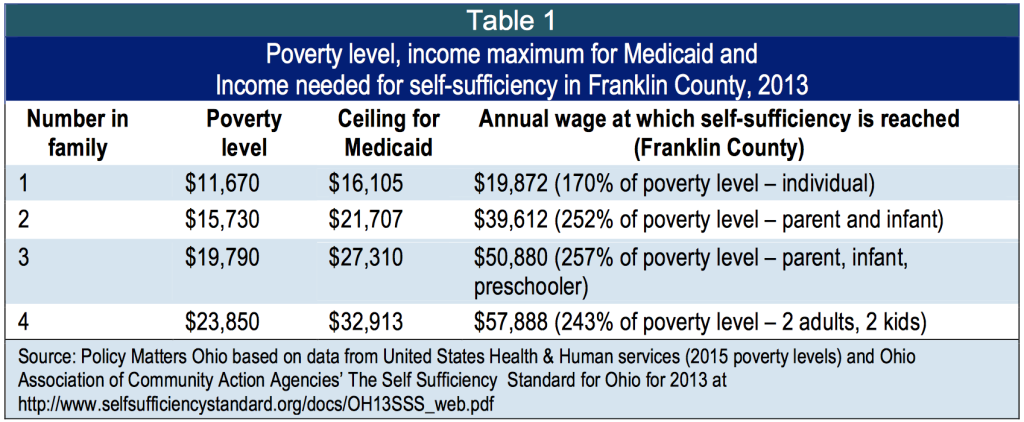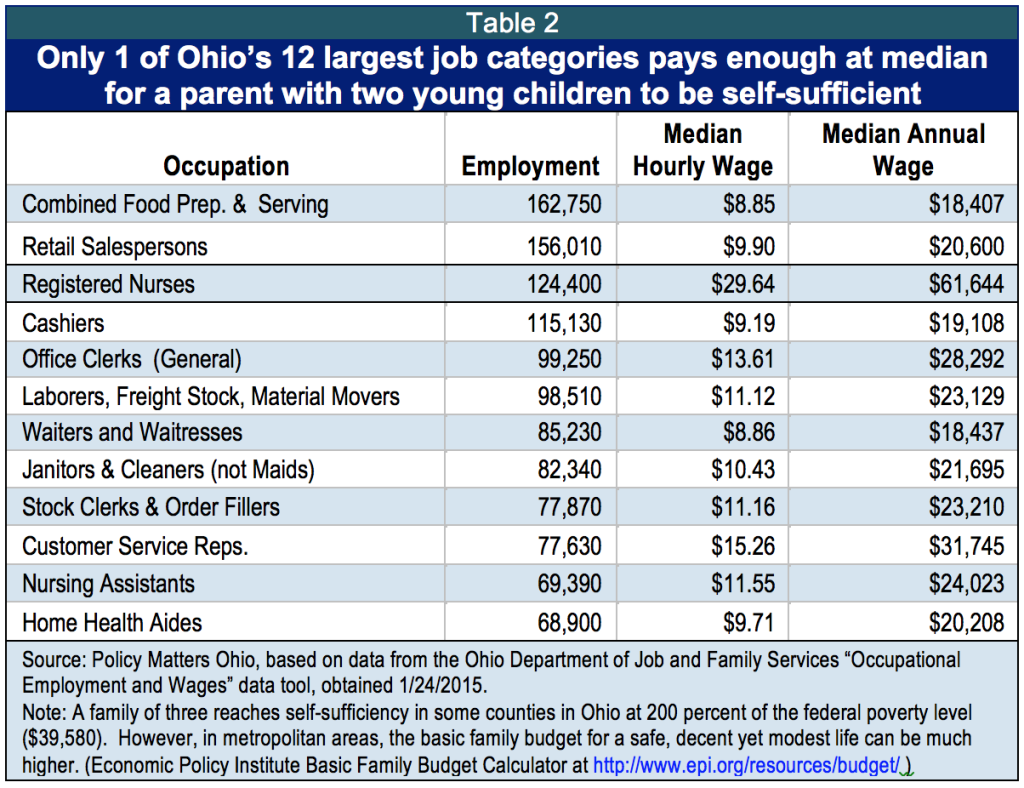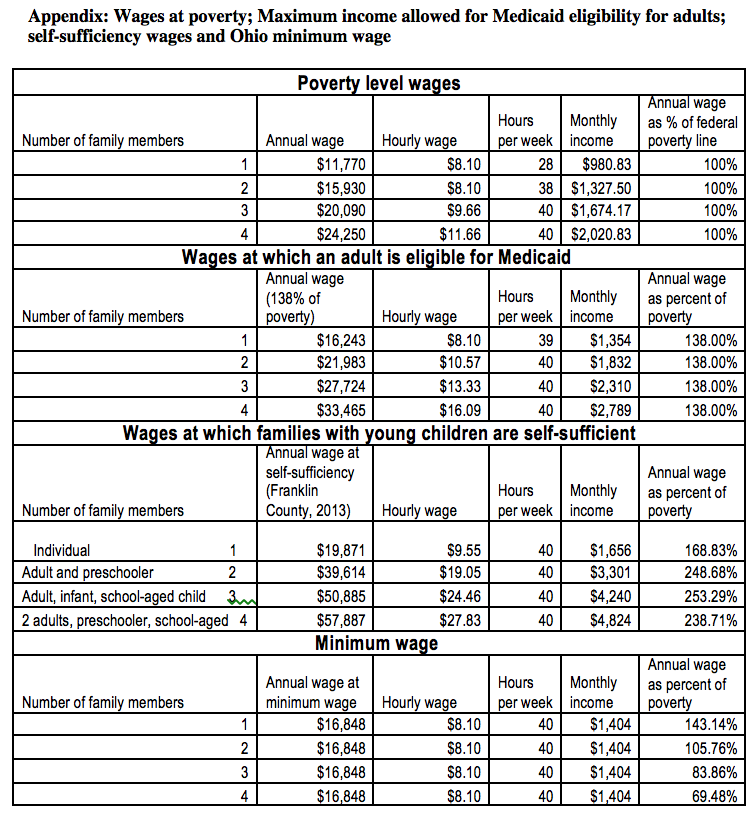
Reducing public assistance would hurt working Ohio families
February 12, 2015
Reducing public assistance would hurt working Ohio families
February 12, 2015
Contact: Wendy Patton, 614-221-4505
By Wendy Patton and Sam Whipple
Lawmakers’ focus on reducing public assistance and boosting requirements for those who need it would hurt low-wage workers struggling to support themselves and their families.The budget bill for 2014 created five separate initiatives aimed at requiring or helping those needing public assistance to get jobs and reduce the use of the safety net.[1] In the opening days of the new legislative session, Senate President Faber introduced Senate Bill 8, which takes aim at this goal. The state’s track record in this area is mixed. Ohio narrowed eligibility for federal food aid and cut the number receiving cash assistance in half, but poverty has not declined. Legislators fought against accepting billions of federal dollars to help low-wage workers get health coverage through Medicaid.
The reality is many working people depend on public services because they can’t make ends meet on low wages. Some programs, like childcare assistance, are actually work supports because they help workers stay employed when wages don’t cover expenses. In most counties in Ohio, family income of more than twice the federal poverty level is needed for self-sufficiency, for working families that have infants and young children (Table 1).
Table 2 shows the 12 largest job categories in the state. Only one provides a median wage that allows a family of three to be self-sufficient if they have young children. The rest pay so little at the median that a parent with two children would be eligible for – and need – work supports and other assistance. In the low-wage economy, services like childcare, Medicaid and food assistance are essential for working families, because wages alone do not support the basic cost of living.
In both 2014 and 2015, Ohio narrowed food aid for needy adults, although the federal government offered a waiver that would have let the state help more men and women. Ohio Works First, the program for the poorest of families - living at half the poverty level, or $9,895 a year for a family of three - now serves half as many people as it did in January 2011, although most did not find jobs.[2] In Ohio, policymakers have been too quick to slash the safety net that helps families survive in this economy.
It would be laudable if the General Assembly helped families get good jobs with living wages that allow them to be self-sufficient. It would also be an accomplishment if the General Assembly improved work supports and other assistance for families in need. It would be a mistake to reduce that assistance or erect barriers to aid through financial, work or other requirements shown to restrict access and participation.
[1] Wendy Patton, “Public Assistance Initiatives in the 2014 budget bill,” Policy Matters Ohio, July 22, 2014 at http://www.policymattersohio.org/mbr-pub-assist-jul-22-14
[2] Tara Britton, OWF: Ohio Works First (animated video), Center for Community Solutions, October 8, 2014 at http://www.communitysolutions.com/animated-videos
Tags
2015Revenue & BudgetWendy PattonWork & WagesPhoto Gallery
1 of 22


